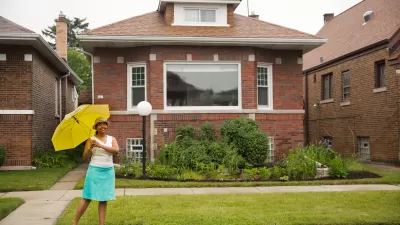As San Francisco's Chief Resilience Officer, Patrick Otellini’s job is to beef up city defenses against crises—a broad mandate that has him tackling seismic safety and water security through capital planning, utilities, and housing affordability.
Resilience work takes both the broad and the long view, uniting city systems to create a recovery plan for disasters over the next hundred years. "Most cities do [emergency] response really well, but start to see problems in the transition to recovery," Otellini tells The Planning Report.
Hence his interest in the housing market. One of San Francisco's major resilience goals is ensuring that interim transitional housing is available after a disaster—especially for renters, who Otellini says make up 70 percent of the city. "The faster we’re able to get people back into their homes after a disaster, the faster we will kickstart the recovery," he explains.
That approach is borne of sad experience. In 1989, the Loma Prieta earthquake devastated the city and put stress on housing and infrastructure, even though, Otellini says, it was only a moderate earthquake.
The city took ten years to develop a comprehensive, community-driven plan for seismic safety that would take 30 years to complete. And recognizing the shared vulnerability of the Bay Area, San Francisco recently issued guidelines requiring all capital-planning projects to incorporate an analysis of regional sea-level rise.
Collaboration is central to resilience planning by nature. The Rockefeller Foundation's 100 Resilient Cities program connects CROs around the world, creating a network where experts of different backgrounds (Otellini is also director of earthquake safety) can "fill in each other’s gaps." And in many cities, part of a CRO's job is connecting the dots between independent city projects to create an integrated recovery plan. Otellini’s position isn't housed in a particular department but reports directly to the mayor, allowing him to be a "conduit" between departments:
"Previously, factions concerned about seismic vulnerabilities didn’t talk to folks worried about sea-level rise. Neither talked to the private sector…or to transportation providers. We’re identifying everyone’s specific issues and saying we want to come up with a grand solution that helps all of these interdependencies."
FULL STORY: San Francisco's Chief Resilience Officer Prioritizes Earthquake, Housing & Sea-Level Preparedness

Alabama: Trump Terminates Settlements for Black Communities Harmed By Raw Sewage
Trump deemed the landmark civil rights agreement “illegal DEI and environmental justice policy.”

Study: Maui’s Plan to Convert Vacation Rentals to Long-Term Housing Could Cause Nearly $1 Billion Economic Loss
The plan would reduce visitor accommodation by 25% resulting in 1,900 jobs lost.

Why Should We Subsidize Public Transportation?
Many public transit agencies face financial stress due to rising costs, declining fare revenue, and declining subsidies. Transit advocates must provide a strong business case for increasing public transit funding.

Paris Bike Boom Leads to Steep Drop in Air Pollution
The French city’s air quality has improved dramatically in the past 20 years, coinciding with a growth in cycling.

Why Housing Costs More to Build in California Than in Texas
Hard costs like labor and materials combined with ‘soft’ costs such as permitting make building in the San Francisco Bay Area almost three times as costly as in Texas cities.

San Diego County Sees a Rise in Urban Coyotes
San Diego County experiences a rise in urban coyotes, as sightings become prevalent throughout its urban neighbourhoods and surrounding areas.
Urban Design for Planners 1: Software Tools
This six-course series explores essential urban design concepts using open source software and equips planners with the tools they need to participate fully in the urban design process.
Planning for Universal Design
Learn the tools for implementing Universal Design in planning regulations.
Smith Gee Studio
Alamo Area Metropolitan Planning Organization
City of Santa Clarita
Institute for Housing and Urban Development Studies (IHS)
City of Grandview
Harvard GSD Executive Education
Toledo-Lucas County Plan Commissions
Salt Lake City
NYU Wagner Graduate School of Public Service





























